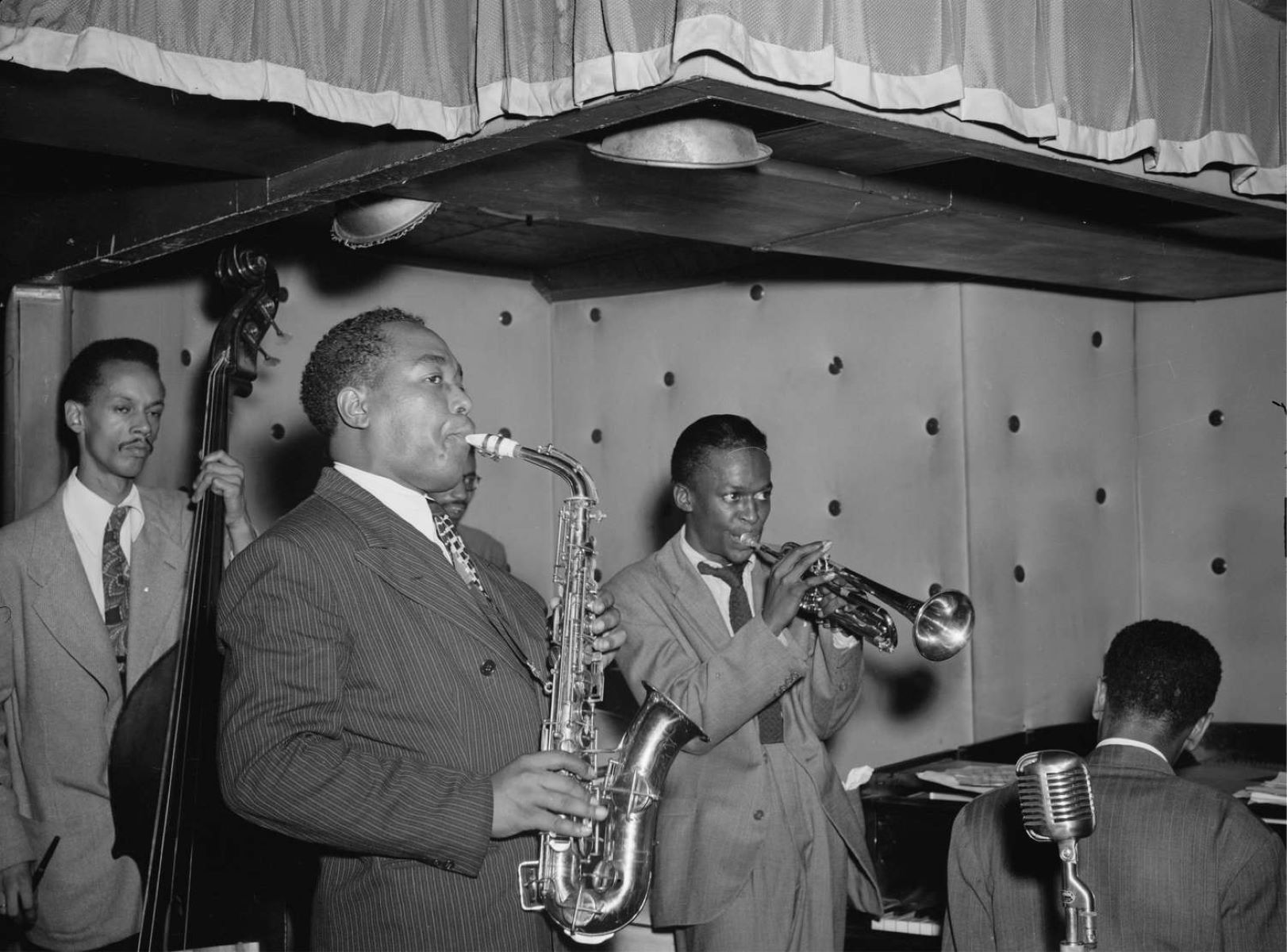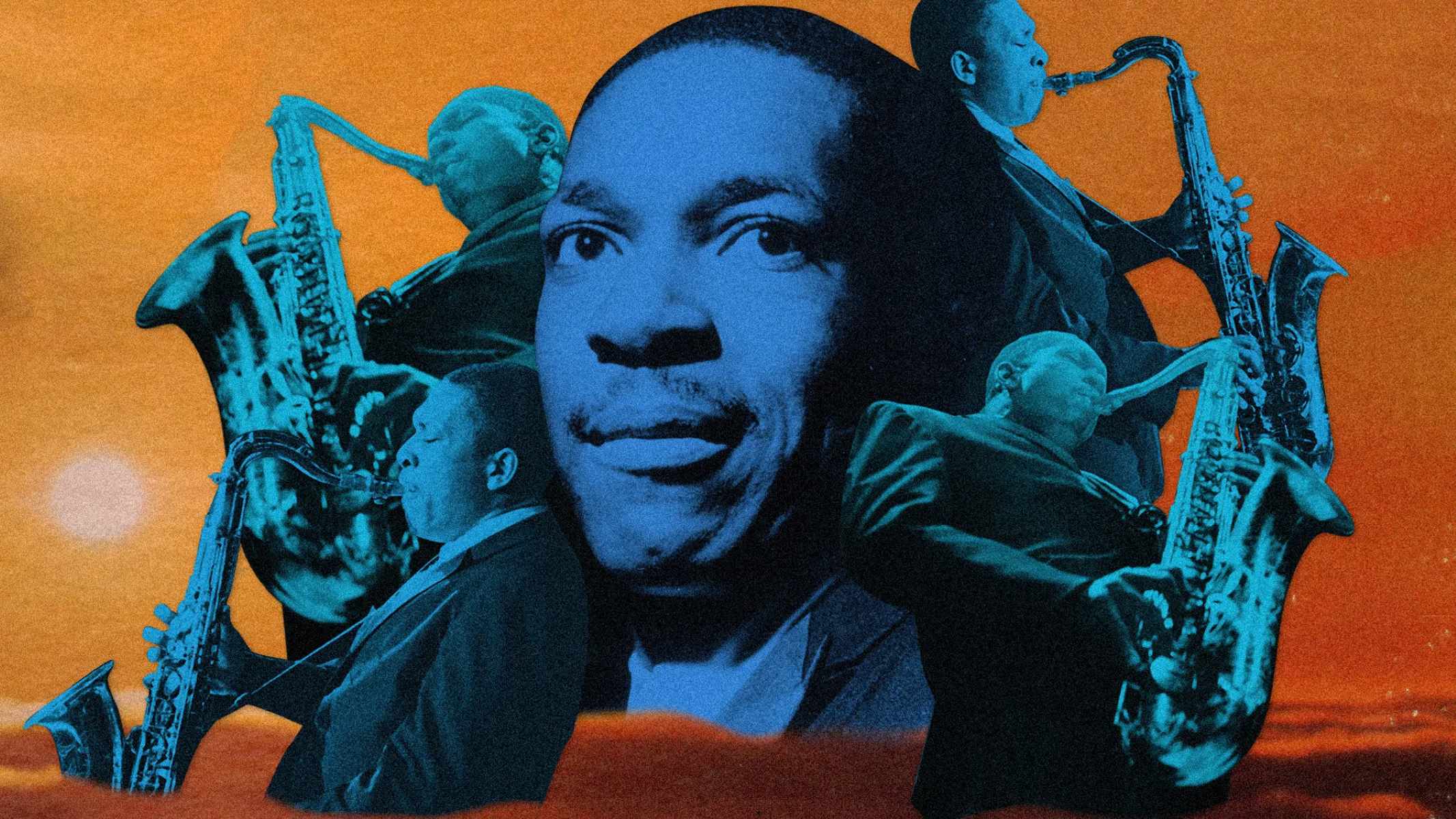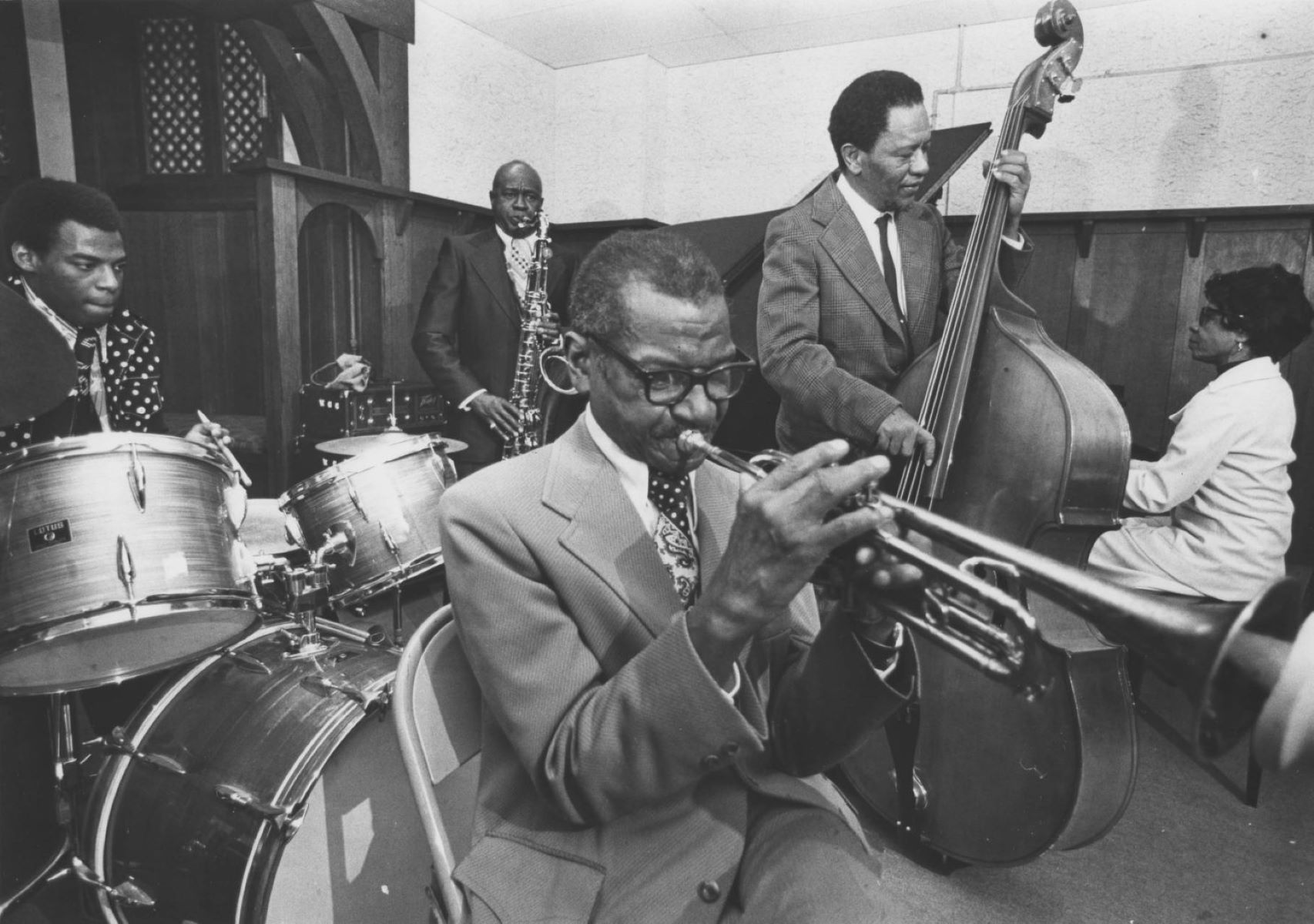Home>Genres>Jazz>Why Do Jazz Drummers Hold Sticks Differently


Jazz
Why Do Jazz Drummers Hold Sticks Differently
Modified: January 22, 2024
Discover why jazz drummers hold their sticks differently and the significance it holds in jazz music. Dive into the world of jazz drumming and its unique techniques.
(Many of the links in this article redirect to a specific reviewed product. Your purchase of these products through affiliate links helps to generate commission for AudioLover.com, at no extra cost. Learn more)
Table of Contents
Introduction
Jazz music is known for its improvisation, syncopation, and complex rhythms. One crucial element of jazz music that often goes unnoticed is the intricate art of jazz drumming. Jazz drummers not only keep time but also add depth and texture to the music through their unique drumming techniques. One aspect of jazz drumming that sets it apart from other genres is the way drummers hold their sticks.
The way a jazz drummer holds their sticks can greatly affect their technique, sound, and overall performance. There are several different grip types used by jazz drummers, each with its own characteristics and benefits. Understanding the various grip types not only provides insight into the technical aspects of jazz drumming but also highlights the individuality and creativity that jazz drummers bring to their craft.
In this article, we will explore the different grip types employed by jazz drummers and delve into the reasons why they hold their sticks differently. We will examine the traditional grip, matched grip, and French grip, uncovering the unique techniques and nuances associated with each grip.
By gaining a deeper understanding of grip types, we can appreciate the diversity and versatility of jazz drumming. So, let’s take a closer look at how jazz drummers hold their sticks and the impact it has on their playing.
Grip Types
Jazz drummers have a variety of grip types to choose from, each with its own advantages and characteristics. These grip types dictate how drummers hold their sticks and ultimately impact their technique and sound. Let’s explore the three main grip types used by jazz drummers:
- Traditional Grip: The traditional grip is often associated with jazz drumming and has its roots in military drumming. In this grip, the left hand holds the stick with an underhand grip, while the right hand adopts a matched grip. The traditional grip allows the drummer to create a distinct sound with the snare drum, emphasizing subtle nuances and dynamics. This grip is not only visually distinctive but also provides a level of finesse and control that complements the intricacies of jazz music.
- Matched Grip: The matched grip is widely used in various styles of drumming, including jazz. In this grip, both hands hold the sticks in a similar manner, with the palms facing down. The matched grip provides balance and power, allowing the drummer to execute fast and intricate rhythms. Many jazz drummers opt for the matched grip as it offers a consistent feel and facilitates versatile playing across different percussion instruments.
- French Grip: The French grip is less commonly used but still finds its place in jazz drumming. With this grip, the drummer holds the sticks with the palms facing each other, using the fingers and thumb to control the movement. The French grip focuses on finger control, enabling the drummer to produce nuanced tones and execute fast, delicate passages. While it may not be as prevalent as the traditional or matched grip, the French grip adds a unique touch to jazz drumming, allowing for expressive and fluid playing.
Each grip type has its own strengths and characteristics, and jazz drummers often choose a grip based on their personal playing style and the specific requirements of the music they are performing. While some drummers may stick to one grip exclusively, others might mix and match grip types depending on the musical context.
Now that we have explored the different grip types, let’s dive deeper into the techniques and nuances associated with each grip and understand why jazz drummers hold their sticks differently.
Traditional Grip
The traditional grip is a grip style that has historical significance in jazz drumming. Its origins can be traced back to military drumming, where drummers needed to hold their sticks in a way that allowed for better control and articulation. In this grip, the left hand holds the stick with an underhand grip, while the right hand adopts a matched grip.
There are a few key reasons why jazz drummers continue to use the traditional grip:
- Snare Drum Technique: The traditional grip excels in playing the snare drum. The underhand grip of the left hand provides a natural angle for the stick to strike the snare drum, resulting in a distinct sound. The thumb acts as a pivot point, allowing for subtle variations in dynamics and articulation. This grip allows jazz drummers to bring out the nuances of the snare drum and add depth to their playing.
- Different Sound Qualities: By using different grip types for each hand, jazz drummers can achieve a unique balance of sound. The matched grip on the right hand offers power and consistency across the drum set, while the traditional grip on the left hand provides a softer, more delicate touch on the snare drum. This contrast in sound qualities allows for greater versatility and expressiveness in jazz drumming.
- Visual Appeal and Tradition: The traditional grip has a distinct visual appeal that is often associated with jazz drumming. It evokes a sense of tradition and connects drummers to the historical roots of the music. Jazz drummers who use the traditional grip not only honor the legacy of their predecessors but also add a touch of elegance and style to their performances.
While the traditional grip may take longer to master compared to other grip types, its unique benefits make it a preferred choice for many jazz drummers. However, it’s important to note that not all jazz drummers exclusively use the traditional grip. Some may utilize a combination of grip types, adapting their technique to the specific playing requirements of different musical contexts.
Now that we have explored the traditional grip, let’s move on to the matched grip and understand its significance in jazz drumming.
Matched Grip
The matched grip is a versatile grip style widely used in various styles of drumming, including jazz. In this grip, both hands hold the sticks in a similar manner, with the palms facing down. The matched grip offers a balanced and consistent feel, allowing for responsive playing across different percussion instruments.
Here are the key reasons why jazz drummers opt for the matched grip:
- Balanced Technique: With the matched grip, both hands hold the sticks in an identical position, promoting symmetry and balance in technique. This grip allows for fluid movement between different drumming elements, such as the snare drum, toms, cymbals, and other percussive instruments. Jazz drummers who rely on speed, agility, and versatility often prefer the matched grip to seamlessly navigate complex rhythmic patterns.
- Consistent Sound: The matched grip provides a consistent sound across the drum set. By holding the sticks in the same way, jazz drummers can achieve a uniformity in their tone and dynamics. This allows for precise control and articulation, ensuring that each stroke delivers the intended impact. The consistent sound quality of the matched grip complements the improvisational nature of jazz music, providing a solid foundation for intricate rhythmic exploration.
- Power and Projection: The matched grip allows for greater power and projection. By employing a grip that maximizes the use of the fingers, wrists, and arm muscles, jazz drummers can generate more force behind each stroke. This is particularly beneficial for dynamic sections of jazz compositions that require impactful accents and fills. The matched grip accommodates a wide range of dynamics, from delicate brushwork to energetic drum solos.
While the matched grip may not have the historical significance and visual appeal of the traditional grip, it offers a practical and effective approach to jazz drumming. Many jazz drummers choose the matched grip as their default technique due to its balance, consistency, and versatility.
It’s important to note that jazz drummers are not limited to a single grip type. Some drummers may incorporate elements of the traditional grip or experiment with variations of the matched grip, depending on their personal playing style and the demands of the music they are performing.
Now that we have explored the matched grip, let’s proceed to the French grip and discover its unique features in jazz drumming.
French Grip
The French grip, although less commonly used in jazz drumming, has its own distinctive characteristics and merits. In this grip, the drummer holds the sticks with the palms facing each other, utilizing the fingers and thumb to control the movement.
Here are the reasons why jazz drummers may choose the French grip:
- Finger Control: The French grip places a strong emphasis on finger control. By utilizing the fingers to maneuver the sticks, jazz drummers can achieve precise and delicate articulation. This grip is well-suited for intricate, fast-paced passages that require rapid stickings and intricate ghost note patterns. The finger control provided by the French grip allows for increased expressiveness and finesse in jazz drumming.
- Nuanced Tonal Variation: With its finger-oriented approach, the French grip enables drummers to produce nuanced variations in tone and dynamics. By adjusting the pressure and position of the fingers, jazz drummers can create a wide range of sounds, from soft and airy to bright and piercing. This versatility in tonal expression adds a layer of complexity to jazz drumming, enhancing the musicality and improvisational nature of the genre.
- Malleability and Adaptability: The French grip offers a level of malleability and adaptability that can be beneficial in certain jazz drumming situations. By using the fingers as the primary point of control, drummers can modify their grip to accommodate different playing styles, techniques, and musical contexts. This adaptability allows jazz drummers to explore diverse rhythmic possibilities and tailor their approach to suit the specific demands of a given performance.
While the French grip may not be as prevalent as the traditional or matched grip in jazz drumming, it presents a unique alternative that emphasizes finger control, tonal variation, and adaptability. Some jazz drummers may choose to incorporate elements of the French grip into their playing to add a distinct touch to their style or to tackle specific musical challenges.
It’s worth noting that jazz drummers often employ a combination of grip types, blending different techniques to achieve their desired sound and expressiveness. The choice of grip ultimately comes down to personal preference, playing style, and the musical context in which the drummer finds themselves.
Now that we have explored the French grip, let’s move on to the differentiating techniques and functional reasons behind the various grip types in jazz drumming.
Technique Differences
The different grip types in jazz drumming not only affect how drummers hold their sticks but also impact their overall technique and playing style. Understanding these technique differences can shed light on the nuanced approaches that jazz drummers employ to create their unique sound and contribute to the music.
Here are some notable technique differences among the grip types:
- Traditional Grip Technique: With the traditional grip, the left hand adopts an underhand grip, allowing for a more flexible wrist motion. This grip facilitates intricate snare drum techniques, such as the ability to produce buzz rolls and complex rudiments. The thumb acts as a pivot point, enabling drummers to control dynamics and articulation with precision. The right hand utilizes a matched grip, providing stability and power for playing on other drums and cymbals. This combination of grip types allows for a diverse range of techniques that complement the multifaceted nature of jazz drumming.
- Matched Grip Technique: The matched grip technique involves holding both sticks in a similar manner with the palms facing down. The hands move in a parallel motion, ensuring symmetry and balanced movement across the drum set. The matched grip technique allows for fluid transitions between various drums and cymbals, facilitating the execution of intricate rhythms and fills. It emphasizes arm and wrist motion, providing drummers with power, speed, and accuracy. This technique is well-suited for jazz drumming, enabling drummers to navigate complex improvisational passages with ease.
- French Grip Technique: The French grip technique centers around finger control and articulation. By positioning the palms facing each other and using the fingers and thumb to manipulate the sticks, jazz drummers can achieve precise and nuanced playing. The fingers act as the primary point of control, allowing for rapid stickings, delicate ghost notes, and detailed dynamics. The French grip technique excels in producing intricate and expressive patterns, bringing out the subtleties and nuances inherent in jazz music.
Each grip type offers its own advantages in terms of technique, allowing jazz drummers to explore different playing styles and musical possibilities. Some drummers may solely use one grip type, while others may incorporate elements from multiple grip types, combining them to suit their individual preferences and the requirements of the music they are playing.
Now that we have examined the technique differences among the grip types, let’s explore the functional reasons that influence why jazz drummers hold their sticks differently.
Functional Reasons
There are various functional reasons that influence why jazz drummers hold their sticks differently. These reasons range from the specific sound qualities produced by each grip type to the ergonomic considerations for efficient and comfortable playing. Understanding the functional aspects behind the different grip types provides insight into the decision-making process of jazz drummers.
Here are some functional reasons behind the choice of grip type:
- Sound Variation: Each grip type has its own unique sound qualities. The traditional grip, with its contrasting grip styles for the left and right hand, allows for a different sound character on the snare drum compared to the other drums and cymbals. The matched grip provides consistent sound and projection across the drum set, emphasizing balance and uniformity. The French grip emphasizes finger control, enabling nuanced tonal variations. Jazz drummers may choose a specific grip type to achieve the desired sound characteristics that complement the music they are playing.
- Technical Requirements: Different musical compositions and styles place varying technical demands on jazz drummers. The grip type chosen may align with these specific requirements. For instance, the traditional grip excels in playing intricate snare drum techniques, making it a suitable choice for jazz styles that heavily feature snare drum work. The matched grip provides the agility and versatility needed for complex rhythmic patterns across the drum set. The French grip, with its focus on finger control, may be advantageous for playing fast, delicate passages or achieving specific tonal nuances.
- Ergonomics and Comfort: Comfort and ergonomic considerations also play a role in the choice of grip type. Each drummer has their own hand shape, finger length, and physicality, which can influence how they hold the sticks. Some drummers may find a particular grip type more natural and comfortable, allowing for ease of movement, reduced strain, and longer playing endurance. By selecting a grip type that aligns with their individual anatomy and playing style, jazz drummers can optimize their technique and avoid unnecessary physical tension.
Ultimately, the functional reasons that influence the choice of grip type are interconnected with the desired sound, technical requirements, and personal comfort of the jazz drummer. By considering these functional aspects, drummers can tailor their grip to enhance their musical expression and optimize their performance.
Now that we have explored the functional reasons behind grip types, let’s move on to the individual preference of jazz drummers and how it factors into their stick-holding techniques.
Individual Preference
When it comes to stick-holding techniques, individual preference plays a significant role in the choice of grip type for jazz drummers. Every drummer has their own unique style, technique, and approach to music, which can heavily influence their stick-holding preference.
Here are some factors that contribute to individual preference in stick-holding techniques:
- Playing Style: Different drummers have distinct playing styles that align with their musical influences and personal expression. Some drummers may lean towards a more traditional approach, drawing inspiration from jazz drumming legends who used the traditional grip. Others may prefer a modern, versatile approach that utilizes the matched grip. Individual playing style heavily influences the grip type a drummer may choose, as it becomes a crucial part of their musical identity.
- Musical Background: A drummer’s musical background can also influence their stick-holding preference. For example, drummers who come from a percussion or orchestral background may be familiar with the traditional grip due to its historical use in those fields. On the other hand, drummers with a rock or contemporary background might be more inclined towards the matched grip, which is commonly used in various genres outside of jazz. The musical experiences and training a drummer has undergone can shape their stick-holding preference.
- Personal Comfort and Feel: The comfort and feel of a particular grip type are subjective to each individual drummer. Factors such as hand size, finger length, and physicality can heavily influence how comfortable a grip feels in the hands. Some drummers may find that a specific grip type allows them to have better control, speed, and overall technique. The personal connection between a drummer and their stick-holding technique is vital for them to feel confident and fluid in their playing.
Jazz drummers often experiment with different grip types to explore the possibilities and discover what feels most natural and exciting for their own playing. It is not uncommon for drummers to develop their unique approach by adapting and blending different grip types to suit their individual preferences and musical goals.
Ultimately, the individual preference of jazz drummers in stick-holding techniques allows them to showcase their unique voice and imprint on the music. It is an integral part of their artistic expression and contributes to their overall sound and style.
Now that we have explored the influence of individual preference, let’s conclude our discussion on why jazz drummers hold their sticks differently.
Conclusion
The way jazz drummers hold their sticks is not arbitrary or random; it is a deliberate choice that has a significant impact on their technique, sound, and overall performance. Jazz drummers have a variety of grip types at their disposal, including the traditional grip, matched grip, and French grip. Each grip type comes with its own unique characteristics and advantages, providing drummers with different sound qualities, technical capabilities, and ergonomic considerations.
The grip types offer specific benefits that make them suitable for different aspects of jazz drumming. The traditional grip excels in playing the snare drum, providing a distinct sound and nuanced control. The matched grip offers balance, consistency, and versatility, making it a popular choice for navigating the drum set. The French grip emphasizes finger control and tonal variation, allowing for intricate and expressive playing.
Functional reasons, such as sound variation, technical requirements, and ergonomic considerations, influence the choice of grip type. Jazz drummers select the grip type that aligns with their desired sound, caters to the technical demands of the music, and provides comfort during performance. Additionally, individual preference plays a crucial role in stick-holding techniques, as drummers develop their own unique style and approach to music, influenced by playing style, musical background, and personal comfort and feel.
In conclusion, the way jazz drummers hold their sticks is a combination of technical considerations, functional reasons, and personal preference. The diversity of grip types and the individuality of drummers contribute to the rich and varied landscape of jazz drumming. Whether using the traditional grip, matched grip, or French grip, jazz drummers find their own unique voice and contribute to the improvisational spirit, syncopation, and complex rhythms that define the captivating world of jazz music.











